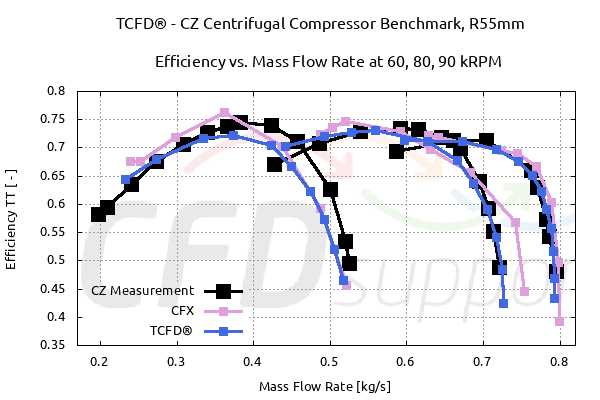
Centrifugal Compressor CFD Benchmark
The following article is based on the public part of the report on the benchmark validation of a CFD simulation of a centrifugal compressor using TCFD. This project was undertaken jointly by CZ a.s. in collaboration with CFDSUPPORT. The aim of the benchmark validation was to evaluate the TCFD, computational fluid dynamics (CFD) software and compare its results with the measurement data.
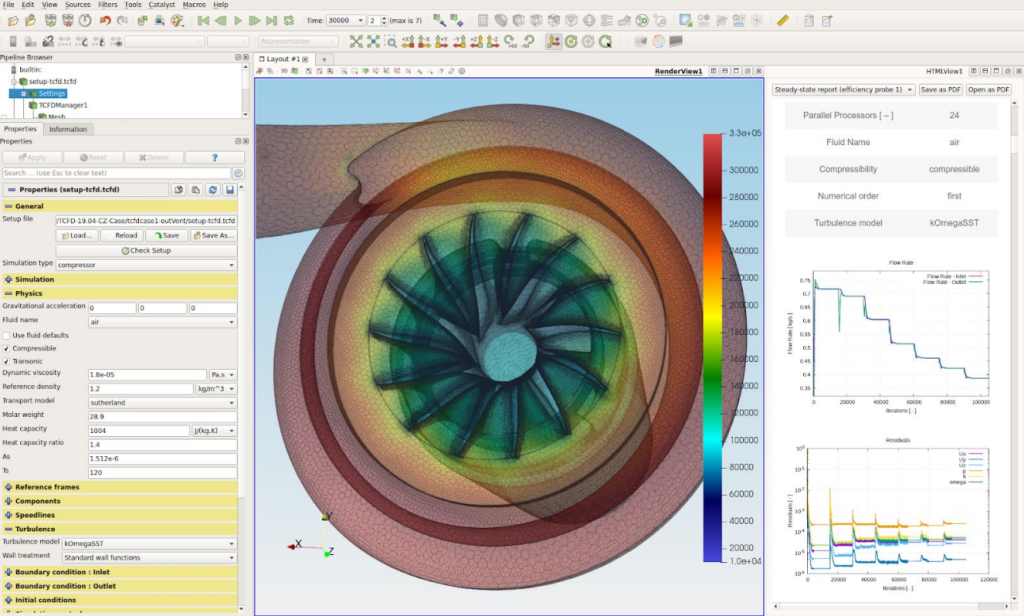
Keywords: CFD, VALIDATION, BENCHMARK, TCFD, SIMULATION, CENTRIFUGAL, RADIAL, COMPRESSOR, COMPRESSIBLE, AIR, TURBOMACHINERY, STEADY-STATE, TRANSIENT, TURBOCHARGER, AIR FLOW, AUTOMATION
Benchmark Parameters
Typical flow speed: 50 m/s Flow model: compressible Rotation RPM: 90000 Mesh size: 0.8M cells Impeller diameter: 110 mm Medium: air Reference pressure: 1 atm Typical Pressure Ratio: 4.0 Reference density: 1.2 kg/m3 Dynamic viscosity: 1.8 × 10-5 Pa⋅s CPU Time: 19 core.hours/point Turb. Model: k-omega SST
Preprocessing
The original CAD model of the centrifugal compressor was in the STEP file format. Original STEP files are usually too complex for comprehensive CFD simulations, so certain preprocessing (cleaning) CAD work is generally required. While the original CAD model for this project was simplified and cleaned using Salome open-source software, any other standard CAD system can be used instead.

The principle is always the same: the surface model has to be created; all the tiny, unimportant, and problematic model parts must be removed, and all the holes must be sealed up. This model is split reasonably into individual waterproof components. This preprocessing phase of the workflow is extremely important because it determines the simulation potential and limits the CFD results.

Mesh
In this particular project, the volume mesh for the CFD simulation created in Salome from the surface model via NetGen (tetrahedral) and later simplified to polyhedral mesh using special OpenFOAM utility polyDualMesh. Alternatively, another external mesh can be loaded directly in MSH, CGNS or OpenFOAM format. Or, the mesh can be created using an automated meshing workflow based on snappyHexMesh. TCFD Case Setup
Basic TCFD settings
Machine type: compressor Both Steady-state calculation Compressible fluid flow RANS turbulence modeling with k-⍵ SST model Number of components: 2 Mesh Mesh size: 0.8M cells Inlet: Total Pressure Outlet: OutletVent Interface into Impeller: AMI Interface out of Impeller: Mixing Plane (10 planes) Speed-lines: 60, 80, 90 kRPM Simulation points: 33
Simulation
The simulation was executed in the automated workflow in steady-state mode. The three speed-lines at 60, 80, and 90 thousand RMP were simulated. TCFD is able to write the results down at any time during the simulation. The convergence of any quantity is monitored during the simulation. When any simulation point converges sufficiently, the simulation can move onto the next simulation point.
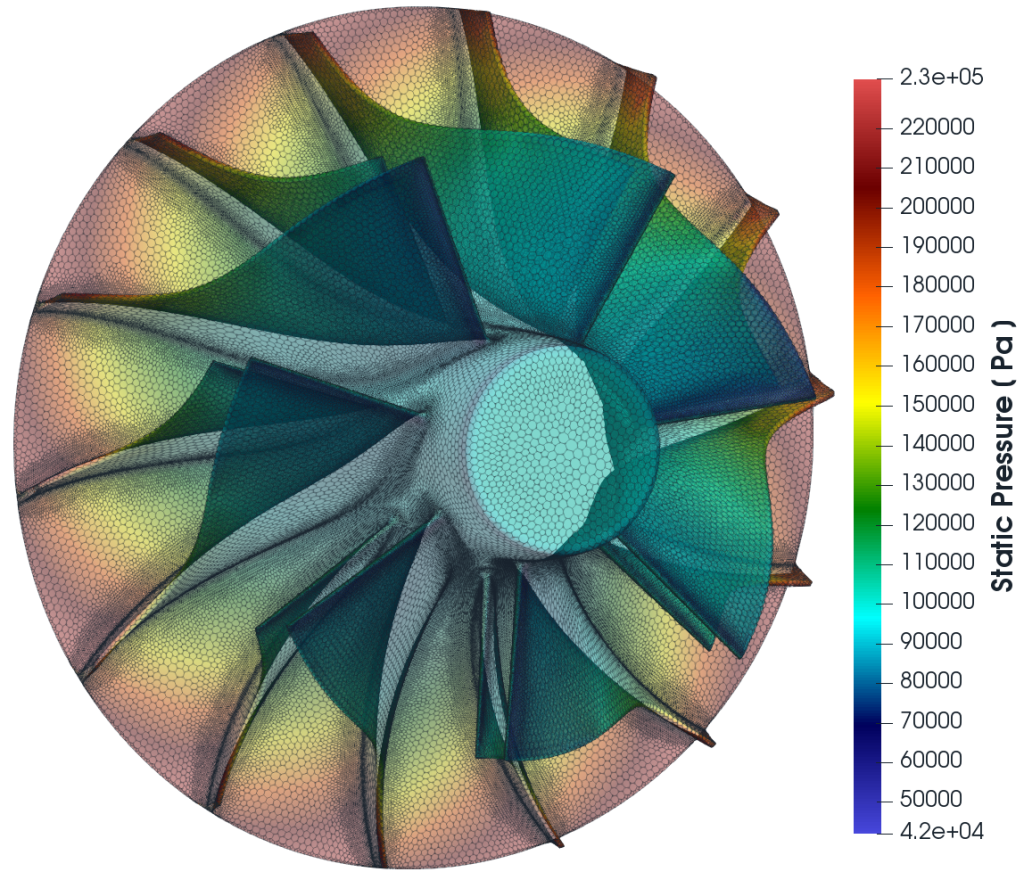
Post-processing
TCFD includes a built-in post-processing module which automatically evaluates the required quantities, such as efficiency, pressure ratio, torque, flow rates, and forces and moments. All these quantities are evaluated throughout the simulation run, and all the important data is summarized in an HTML report, which can be updated anytime during the simulation for every run. Furthermore, visual postprocessing of the volume fields can be done with ParaView.
Results - Comparison with the Measurement Data
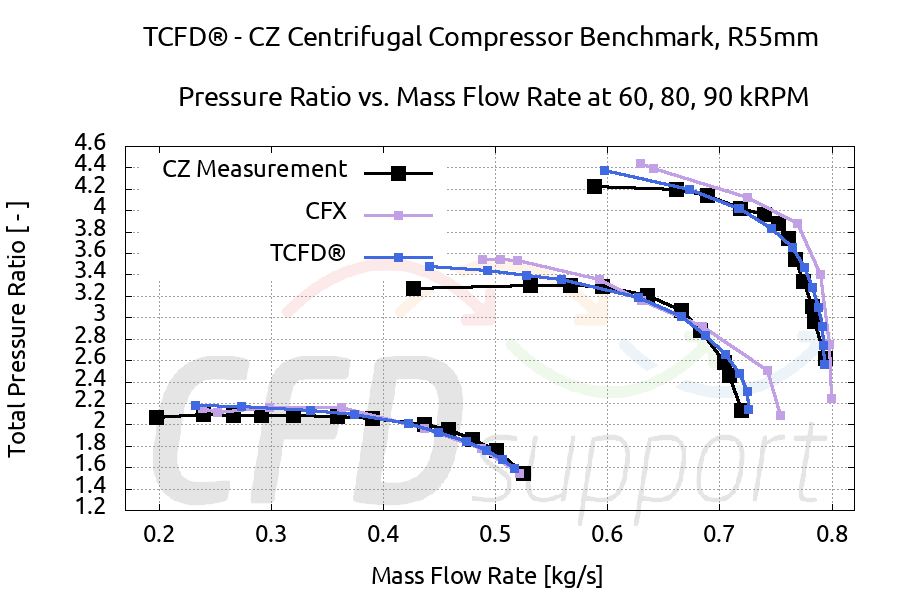
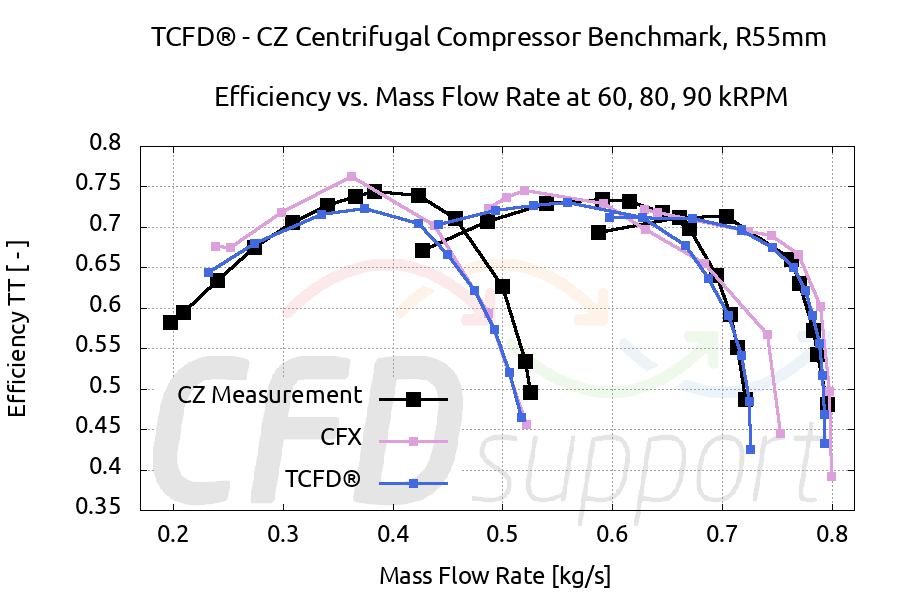
Conclusion
The complex CFD analysis of a centrifugal compressor using TCFD provides very good agreement with the measurement data and other CFD code, as has been demonstrated. Potential questions will be answered on request at info@cfdsupport.com.
May you have any questions, feel free to contact us.
Best Regards,
Team CFD SUPPORT
PS: Please follow CFD SUPPORT on social networks:

